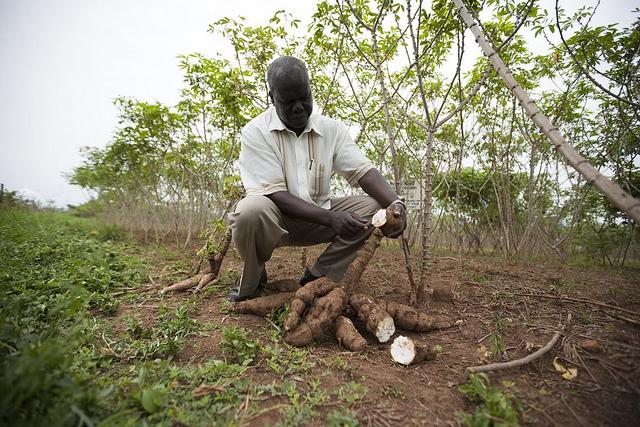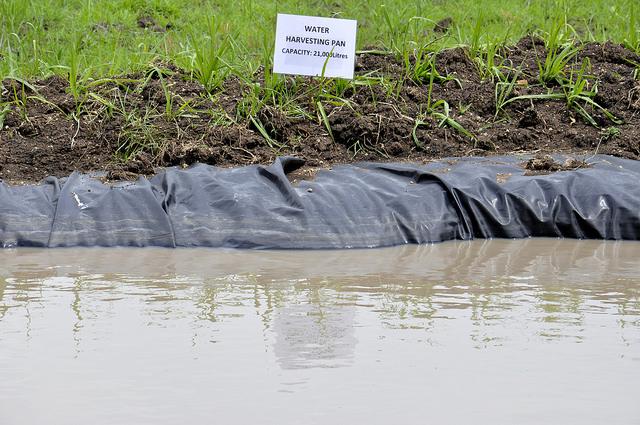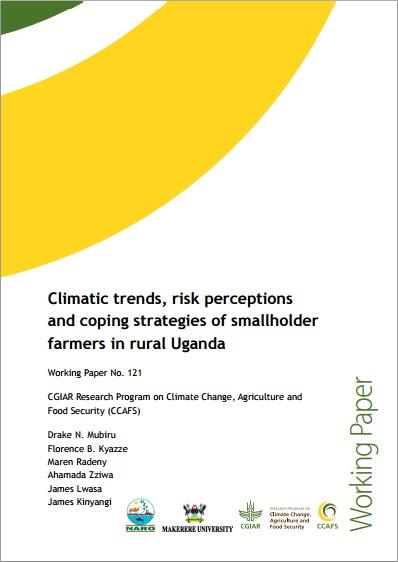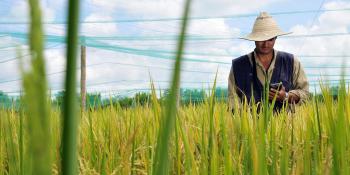Drought and pest epidemics among top climate risks in rural Uganda

The traditional coping strategies developed by local communities provide useful foundations for effective adaptation strategies.
“We find it difficult to plan our farm activities; rainfall patterns are very variable and confusing. Dry spells are common during crop production seasons,” said farmers in rural Uganda, during a focus group discussion session convened by researchers to understand farmers’ perception of climatic trends and climate-related risks.
Smallholder farmers in Uganda face a wide range of agricultural production risks, with climate change and variability presenting new risks and vulnerabilities. Climate-related risks such as prolonged dry seasons have become more frequent and intense with negative impacts on agricultural livelihoods and food security.
A new working paper by the CGIAR Research Program on Climate Change, Agriculture and Food Security (CCAFS) assessed farmers’ perceptions of climate change and variability and analysed historical trends in temperature and rainfall in two rural districts of Uganda. The paper ‘Climatic trends, risk perceptions and coping strategies of smallholder farmers in rural Uganda’ (PDF) also identified the major climate-related risks affecting crop and livestock production and the existing innovative strategies for coping with and adapting to climate-related risks, with potential for upscaling in rural districts.
The paper uses household survey data and historical climate data from two rural districts of Rakai and Hoima in Uganda. The districts represent diverse agro-ecological, production, social and institutional settings and are representative of East African farming systems.
The findings show a need to demonstrate and promote early maturing; drought tolerant and water efficient crops and crop varieties; pastures and fodder varieties; rainwater harvesting and soil nutrient and moisture management technologies; and livestock management options and strategies that restore sustainable productivity. Research and farm development initiatives need to foster integration of crops and livestock that exploit synergies of indigenous traditional practices and modern technologies and innovations. Efforts should be mobilized to establish effective climate risk management information flow networks to inform farm-level decision making, taking into account the already existing communication channels or structures.

Local farmers must be able to access improved, drought tolerant crop varieties that are adapted to local conditions, resist diseases and have higher yields. Photo: Gates Foundation
Farmers’ perceptions and knowledge of climate change
Changes in climatic conditions perceived by farmers included erratic rainfall onset and cessation that were either early or late, poor rainfall seasonal distribution and little rainfall. Farmers also reported variations in temperatures pointing to an increase. The farmers’ perceptions were consistent with the observed historical trends from meteorological data.
Climate-related risks and impacts on crop and livestock production
Farmers across the two districts have experienced major climate-related risks that threaten current and future agricultural production. Major climate-related risks included drought, disease and pest epidemics and hailstorms. These conditions result in declining water resources, reduction of pasture productivity, bush fires, crop failure and physiological changes in crop flowering and fruiting times.
Learn more: Impact of climate change on African agriculture: focus on pests and diseases
Understanding farmers’ perceptions of climate change and how climate-related risks impact smallholder crop and livestock production is important in designing climate change adaptation strategies and formulation of policy recommendations.
Farm-level strategies for coping with and adapting to climate change

Farmers harvest rainwater for agricultural and domestic use. Photo: V. Atakos
Local farmers in East Africa developed a number of local coping strategies that enabled them reduce vulnerability to climate variability and change. Farmers often use a combination of technologies and strategies, and these include the use of indigenous traditional innovations and modern technologies; mulching, intercropping, use of manure and improved crop varieties. Other local innovations included the establishment of kitchen gardens, rainwater harvesting for domestic and agricultural use, use of organic pesticides, micro irrigation, and use of non-conventional organic fertilizers.
Although traditional coping strategies provide important lessons on how local communities can better prepare and adapt to climate change in the long-term, the increasing climate variability, frequency and more severe shocks are likely to surpass traditional coping strategies. Moreover, some of these local coping strategies can only assist families in the short-term.
Download the working paper
Mubiru DN, Kyazze FB, Radeny M, Zziwa A, Lwasa J, Kinyangi J. 2015. Climatic trends, risk perceptions and coping strategies of smallholder farmers in rural Uganda. CCAFS Working Paper no. 121. CGIAR Research Program on Climate Change, Agriculture and Food Security (CCAFS). Copenhagen, Denmark. Available online at: www.ccafs.cgiar.org
Vivian Atakos is a Communications Specialist and Maren Radeny is a Science Officer at CCAFS East Africa.




